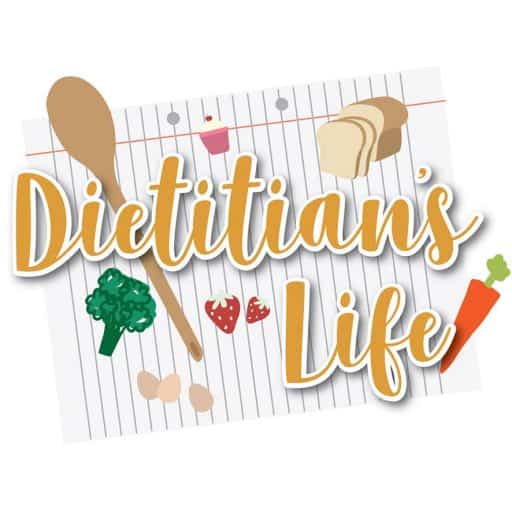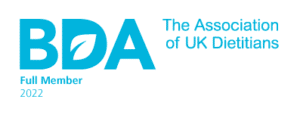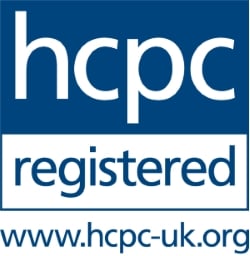I would like to welcome Harpreet Sohal RD as guest writer on Dietitian’s Life. Harpreet takes a look at diversity in the profession of dietetics. Thanks so much for discussing this important topic Harpreet. You can find Harpreet on social media including instagram @veggie.nut . Louise x
Table of Contents
What was your path to training as a dietitian and when has your background been advantageous in your job?
I studied Nutrition as a Masters course, followed by a year of dietetic assistant work within a large London hospital. This confirmed my desire to study dietetics, which I then went on to study as a PGDip course. Within that time I helped to set up the Nutrition and Dietetics division of the British Sikh Doctors Organisation. They are a charity who provide free healthcare screening around the country, often held in Sikh temples (i.e. a Gurdwara) and community centres.
Being able to speak Punjabi and having an understanding of religious beliefs, cultural norms, cooking practices, eating patterns, cultural mindsets regarding ‘healthy’ eating, and the value of food in their day-to-day lives, enables me to effectively communicate and advise a wide range of the South Asian demographic about various aspects of nutrition and health. Additionally, I use my nutrition knowledge to reassure and educate these communities about not having to stop eating or ‘swap out’ their traditional foods in order to achieve a ‘healthy’, balanced diet.

What is diversity?
There is no single definition of diversity. There are many characteristics that could be included as outlined in The Academy of Nutrition and Dietetics Diversity and Inclusion statement: “…striving to recognize, respect and include differences in ability, age, creed, culture, ethnicity, gender, gender identity, political affiliation, race, religion, sexual orientation, size, and socioeconomic characteristics…” (1). The Health and Care Professions Council (HCPC) suggest, “‘Diversity’ is concerned with representation and valuing individuals for the different perspectives they have to offer.” (2).
As ‘diversity’ includes many elements, this blog will largely focus on cultural and ethnic diversity, which naturally interlink with several of the other characteristics mentioned above.
Why is it important to have diversity in dietetics or any profession?
The lack of diversity and representation in a profession can be linked to a lack of a sense of belonging, feeling unwelcome or undervalued. It is also associated with: lower organisational commitment, lower job satisfaction, higher work tension, absenteeism, high employee turnover and loss of talented employees (3). Clearly these can impact both individual and organisational wellbeing.
Diversity in dietetics is vital as we don’t necessarily resemble the melting pot of communities that we care for in the UK, or reflect the diversity of the world we currently live in. This is apparent not only from anecdotal evidence and discussions with colleagues but also from the (limited) available HCPC data on registrants – more on that later!
In terms of nurturing a diverse profession, a lack of visible diverse role models amongst dietitians in the clinical, non-clinical, media and social media settings is unhelpful. This may impact prospective students’ awareness of dietetics as firstly, a career choice and, secondly, a profession that embraces and supports members from diverse backgrounds. The image of a young Caucasian female dietitian in a white lab coat still exists when searching the word ‘dietitian’ online. We desperately need to change that narrative as it no longer reflects the diversity of our profession.

What can diversity bring to our patients or clients?
There are many benefits of a diverse healthcare workforce. These include those outlined by the Advisory Committee on Minority Health, from the US Department of Health and Human Services (4):
- Improved access to high-quality care for the medically underserved
- A larger pool of medically trained executives and policymakers who are representative of diverse communities, to assume future leadership positions
- Greater patient choice and satisfaction
- Better patient-practitioner relationships, increased trust, and communication
- Increased likelihood of patients receiving and accepting appropriate medical care; and, ultimately,
- Improved health
Additionally, increasing diversity in the workforce may help to reduce or potentially eliminate health disparities and inequalities within communities (5). Diversity amongst dietitians can also help us better understand the range of challenges and barriers our patients and the public face with regard to health and disease. We can use this knowledge to continually develop inclusive interventions and treatments to best support them in a holistic manner.
Is our current workforce diverse?
Interestingly, the first ever HCPC diversity data report was published late last year. The data was collected from a voluntary survey in late 2019/early 2020 of HCPC registrants [i.e. Allied Health Professionals (AHPs), scientists and psychological professionals], staff and partners (i.e. “HCPC registrants, members of the public and legal professionals who contribute their expertise to the HCPC and play important roles in the regulatory/decision making processes…”) (6).
Unfortunately, the response rate was only 5.9% – too small a sample to accurately represent the groups they surveyed, however, it could give us some insight into the diversity profile of registrants. These should be taken with a pinch of salt though! (Figures 1 and 2).


Figures 1 and 2 show that UK HCPC registrants predominantly identified as: female (71%), white (89%) and heterosexual (90%), with only 11% identifying as from a Black, Asian and Minority Ethnic (BAME) group and 10% as Lesbian, Gay, Bisexual, Queer and with other non-heterosexual orientations (LGBQ+). Within the HCPC registrants, AHPs’ data had a similar profile – 72% identified as female and 90% as white (6).
As far as I’m aware, there’s very limited data specifically on diversity within UK dietetics. November 2020 HCPC snapshot data of gender showed that out of 10,128 HCPC-registered dietitians, 9,432 (93%) were female, 657 (~6%) male and 39 (<1%) were unknown. There doesn’t appear to be data available on ethnicity, sexual orientation or any other characteristic, by profession (7)
This year, the most recent HCPC Diversity Data Survey (2020-21) closed in March and the results have not yet been shared. It will be interesting to see if: a) more people responded to the survey this year due to the recent spotlight on diversity, b) the results will be similar to the initial 2019/2020 findings or if there will be any unexpected stats revealed, and, c) we can see a full breakdown of diversity characteristics for each allied health profession, including dietetics. The results will hopefully shed light on specific challenges faced by different groups and help inform diversity improvement work (e.g. initiatives and policies to promote fairness) within each registered profession (8).
If we don’t have diversity in dietetics, what can we do about it?
Within dietetics, there are several areas we could focus on to help increase diversity. These include: 1) at an individual level/in our own practice, 2) at an organisational level and, 3) within education and recruitment. This is by no means an exhaustive list of suggestions!
Individual level/in practice:
- Ensure dietitians from diverse backgrounds are involved in local school or college careers days and activities, with the aim to encourage earlier awareness and recruitment of students from a wide range of backgrounds into the profession.
- Get involved in mentoring programmes, where experienced diverse dietitians can support prospective students, junior dietitians and/or colleagues throughout different stages of their careers, and encourage applications to leadership roles too.
- Develop or have access to resources that provide culturally appropriate nutrition information for individual patient/client groups within different dietetic specialities.
Organisational (local and national):
- Focus on helping diverse dietitians be seen in visible roles, to appeal to, employ and maintain a diverse workforce.
- Create specialist working groups to expertly advise organisations and educational institutions on how best to promote diversity within a variety of settings.
- Ensure diversity is routinely discussed and reviewed at both local and national dietetic groups and meetings.
Education and recruitment:
- Within admissions teams, prioritise recruiting a diverse range of students and ensure that we can support their diverse needs.
- Evolve dietetic course curriculums to have a larger focus on the importance of diversity in all its forms. For example, in terms of nutrition education, we are taught that the Mediterranean diet is a model eating pattern for health. However, this doesn’t mean that other ethnic diets are not and cannot be equally ‘healthy’.
- A greater focus on developing cultural competency in dietetics degrees and training is paramount. Cultural competence is, “the ability of health providers and organisations to deliver healthcare services that meet the cultural, social, and religious needs of patients and their families”. Culturally competent care can improve patient quality and care outcomes (9).
- It’s important to highlight that this is a continual learning process. The very definition of what dietitians do is to tailor dietary advice in a patient-centred manner, which most definitely requires an element of cultural awareness and competency to provide consistent quality and effective care to each patient/client.
- Champion diverse recruitment in your workplace and help develop leadership initiatives to do the same.
Some great progress has been made within dietetics more recently, with several new UK groups and organisations raising awareness of the need to increase and promote diversity. These range from student dietitian social media pages sharing their diverse backgrounds and cultural foods, to free webinars and podcasts focused on diversity hosted by registered dietitians, and nutrition organisations celebrating diversity too.

How can non diverse dietitians work on being an ally to diverse dietitians?
One definition of an ally is, “Someone who makes the commitment and effort to recognise their privilege (based on gender, class, race, sexual identity, etc.) and work in solidarity with oppressed groups in the struggle for justice. Allies understand that it is in their own interest to end all forms of oppression, even those from which they may benefit in concrete ways.” (10).
We are all responsible for reflecting on the level of diversity within our own practice and the wider profession. The answer to this question could be a whole essay in itself (!). Here are a couple of thoughts to consider.
- Speak about diversity and associated barriers with your colleagues, even if it feels uncomfortable for you to start with. After seeking their permission, having an open conversation with colleagues from diverse backgrounds about their experiences, with humility and a willingness to learn may be a good place to start. Think about how you can better understand the challenges they face and/or work together to help overcome barriers within the workplace/profession to promote diversity.
- Actively challenge the lack of diversity, quality and inclusion you see. If you’re involved in creating or delivering services, events, organisations, communications and publications, and are aware of a lack of diversity in the group involved, raise the issue. Help be a voice for those who perhaps are not in the room and advocate for diverse dietitians to be involved. This will ensure you’re capturing a varied range of perspectives and experiences.
Use these opportunities for learning and growth for all the individuals and teams involved. Importantly, keep the conversation going!
Bottom line
With a growing diverse UK population, the need for a visibly diverse dietetic profession is paramount. We know a representative healthcare workforce has multiple benefits, which ultimately improve the quality of care patients receive and their associated health outcomes. The promising work of individuals and groups in promoting diversity is a great start, however, all dietitian practioners, leaders, educators and students need to be advocates for a diverse workforce. By working together, we can make a larger and more impactful change for both our profession and our patients.










